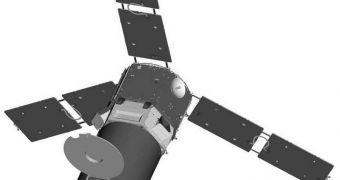Late on Wednesday, June 29, the United States Air Force (USAF) successfully launched a new and advanced reconnaissance satellite, which will be used to augment to capabilities of the military.
The spacecraft will contribute to producing accurate images at very high speeds, and also to transferring these datasets to soldiers on the front lines. This should help improve combat efficiency considerably, officials believe.
The battlefield reconnaissance satellite is called ORS-1, and is the first to be constructed under the Operationally Responsive Space Office (ORS) program, which is developed by the US Department of Defense (DOD).
ORS' main goal is to support Combatant Command operations as an operational prototype. The first spacecraft of the series was delivered to Earth's orbit by a Minotaur 1 delivery system. The rocket took off at 11:09 pm EDT (0309 GMT Thursday).
The mission blasted off from the NASA Wallops Flight Facility and Mid-Atlantic Regional Spaceport, which is located on Wallops Island, Virginia. The event could be seen all the way from New York City and Washington, DC, Space reports.
“Go! Go! Go! Minotaur 1 is away with the #ORS1 satellite over the Atlantic!” a Twitter message from Wallops officials said. It was posted to the micro-blogging site as soon as the rocket took off.
Originally, the mission was supposed to take off on Tuesday evening, but severe weather conditions forced mission controllers to aboard the launch. The ORS-1 took about $226 million to construct.
Even on Wednesday, there were still some delays, this time caused by a problem that developed in the spacecraft's launch support equipment. Another glitch affected the rocket's flight termination system, but all issues were eventually resolved.
In the end, ORS-1 launched towards the end of its window of opportunity, but everything went smoothly from that point on. The satellite is currently heading towards its designated orbit, where it will spend the next two years.
As soon as the satellite reaches its destination, mission controllers will begin a month-long testing and commissioning phase, during which all systems on the spacecraft will be put through their paces. Once this stage of the mission is complete, the ORS-1 will begin actual observations.

 14 DAY TRIAL //
14 DAY TRIAL //